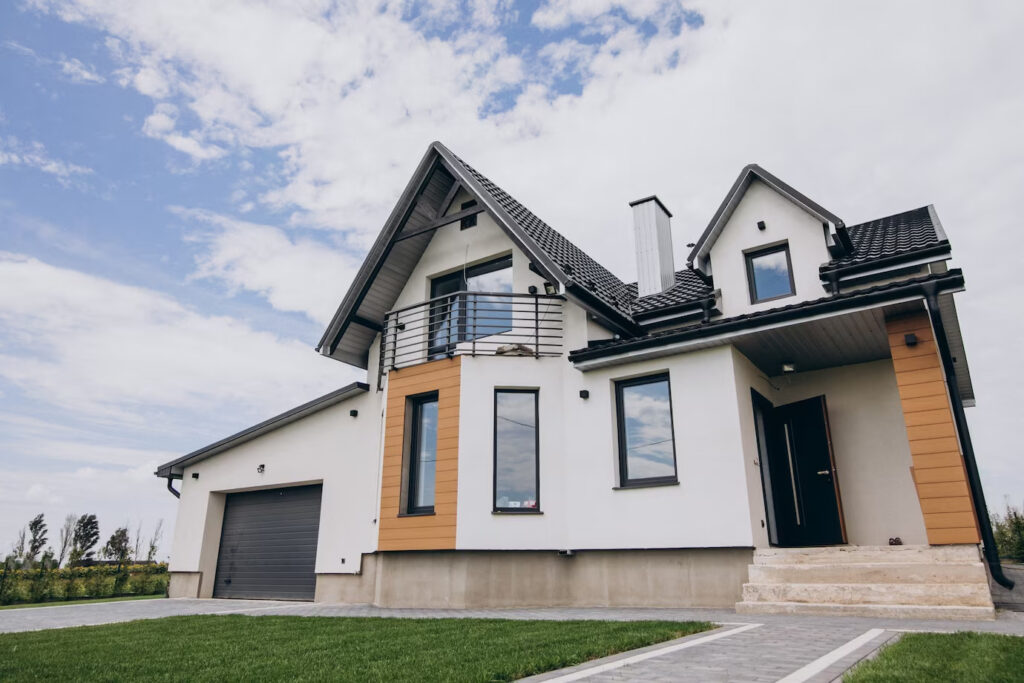Roofs shelter us from the elements, providing a critical layer of protection for our homes and businesses. But when it comes time for a roof replacement, few people consider the environmental impact. Given the global push towards sustainability and environmentally-friendly practices, it’s essential to delve into the ecological footprint of roof replacement.
1. Materials and Their Lifecycle
A. Asphalt Shingles
The most common roofing material in North America, asphalt shingles, comprises a mix of asphalt, sand, and granules. Though they’re cost-effective and easy to install, they have a significant environmental toll.
- Production: Mining and processing the raw materials for shingles consumes energy and contributes to greenhouse gas emissions.
- Lifespan: While they can last for 20–30 years under ideal conditions, in reality, many are replaced sooner due to wear and damage. This short lifespan means more frequent replacements and, thus, more waste.
- Disposal: Asphalt shingles are not biodegradable. Most discarded shingles end up in landfills, and given their vast usage, this amounts to millions of tons of waste annually.
B. Metal Roofing
Metal roofing, made of materials like aluminum or steel, offers a more environmentally friendly alternative.
- Production: While metal roof production also has an environmental footprint, the raw materials are often recycled, reducing the impact.
- Lifespan: Metal roofs can last 50 years or more, reducing the frequency of replacements.
- Disposal: Metal is recyclable. When it’s time to replace, old metal roofs can be melted down and repurposed, diverting waste from landfills.
2. Waste management and recycling
When a roof is replaced, the old materials need to be discarded. Unfortunately, not all of it can be recycled, leading to increased landfill waste. But, with a more conscious approach:
- Recycling Facilities: Some specialized facilities can recycle old roofing materials. For instance, asphalt shingles can be repurposed into pavement.
- Waste Reduction: By selecting long-lasting roofing materials, homeowners can reduce the frequency of replacements and associated waste.
3. Energy Consumption and Efficiency
Roofing doesn’t just impact the environment during production and disposal—it also affects a building’s energy efficiency.
- Cool Roofs: These are designed to reflect more sunlight and absorb less heat, reducing the need for air conditioning and cutting down on energy bills.
- Insulation: A well-insulated roof acts as a barrier to heat entry or escape. This means less reliance on heating or cooling systems and reduced energy consumption.
4. Sustainable Alternatives
Those looking to reduce their environmental footprint have several sustainable roofing options:
- Green Roofs: These are covered with vegetation and soil. They offer insulation, reduce stormwater runoff, and provide a habitat for wildlife.
- Solar Roofs: Incorporating solar panels into roofing can produce clean energy, reducing reliance on fossil fuels.
5. Making the right choice
For the environment-conscious homeowner, making the right choice can seem daunting. Here are some steps to guide the decision:
- Assess the need: Before opting for a full replacement, evaluate whether repairs might suffice. If only certain areas are damaged, spot fixes can extend the roof’s life and reduce waste.
- Research Materials: Understand the environmental impact of various materials. While some might be pricier, their longer lifespan and recyclability might make them a worthy investment.
- Hire responsibly: Engage with contractors who are committed to sustainable practices, from sourcing materials to waste disposal.
- Maintenance is key. Regular maintenance can prolong the life of your roof. Periodic inspections and minor repairs can prevent the need for premature replacements.
In conclusion, while roof replacements are often necessary for the safety and protection of our homes, it’s essential to make informed, eco-friendly choices. By understanding the environmental impact and considering sustainable alternatives, homeowners can play their part in preserving the planet for future generations.

